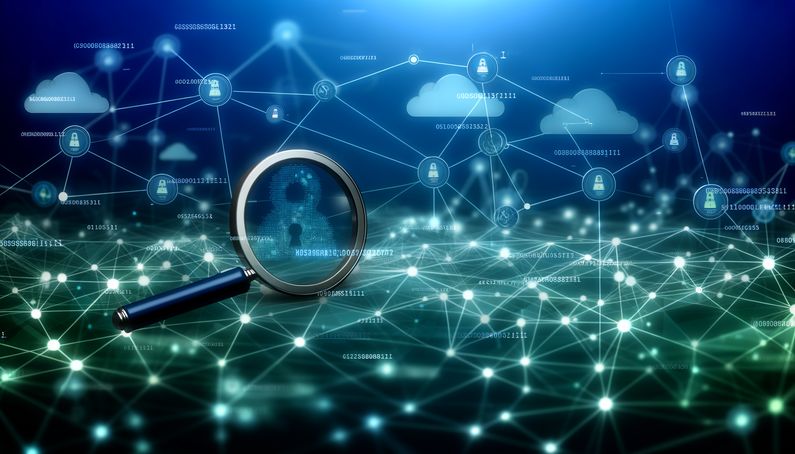
Enhancing Digital Security with External Attack Surface Management
External Attack Surface Management (EASM) is a critical component in the arsenal of modern digital risk protection strategies. As organizations expand their digital footprints, the complexity of managing internet-facing assets grows exponentially. EASM begins with comprehensive asset mapping, a process that identifies and catalogs all digital assets such as domain names, SSL certificates, and IoT devices across various environments. This foundational step is crucial for maintaining a detailed inventory of an organization’s digital presence, as emphasized by CrowdStrike.
Once assets are mapped, continuous monitoring becomes indispensable. EASM tools automatically scan for vulnerabilities and misconfigurations, providing real-time threat detection. This proactive approach is vital, as highlighted by Bleeping Computer, to prevent cyber attackers from exploiting security gaps.
In a world where resources are finite, risk prioritization allows organizations to focus on the most critical threats. By assigning risk scores, EASM helps allocate resources efficiently, a strategy supported by Check Point Software. Furthermore, EASM enhances incident response capabilities by providing actionable intelligence for swift intervention, as noted by Bleeping Computer.
Finally, the ever-evolving threat landscape necessitates continuous improvement and adaptation of EASM strategies. Regular updates and compliance with regulations like ISO and GDPR are essential for robust security, as discussed by RiskProfiler.
Understanding EASM
Comprehensive Asset Mapping
External Attack Surface Management (EASM) begins with the critical task of comprehensive asset mapping. This involves identifying and cataloging all internet-facing digital assets, which include domain names, SSL certificates, operating systems, servers, IoT devices, and network services. These assets are dispersed across on-premise environments, cloud platforms, and third-party vendors. The goal is to ensure that no asset remains unaccounted for, as each represents a potential entry point for cyber threats. According to CrowdStrike, this mapping is crucial because it provides organizations with a detailed inventory of their digital footprint, enabling them to prioritize security efforts effectively.
Continuous Monitoring and Threat Detection
Once assets are identified, continuous monitoring becomes essential. EASM tools are designed to regularly and automatically scan the external attack surface for vulnerabilities, misconfigurations, and other security gaps. This proactive approach allows organizations to detect emerging threats in real-time and respond swiftly. As highlighted by Bleeping Computer, undetected security gaps are likely to be exploited by cyber attackers. Therefore, continuous monitoring is a cornerstone of EASM, providing security teams with the actionable intelligence needed to mitigate risks before they can be leveraged by malicious actors.
Risk Prioritization and Management
In an ideal scenario, organizations would have unlimited resources to address all potential security threats. However, the reality is that resources are often limited, necessitating a strategic approach to risk management. EASM empowers organizations to prioritize risks based on their potential impact and likelihood of occurrence. By assigning risk scores to identified vulnerabilities, security teams can focus their efforts on addressing the most critical threats first. This prioritization is essential for efficient resource allocation and is emphasized by Check Point Software, which notes that EASM tools help organizations report potential security risks to their security teams for timely intervention.
Integration with Incident Response
EASM significantly enhances incident response capabilities by providing real-time insights into the external attack surface. When a security incident occurs, time is of the essence. EASM tools offer security teams the information needed to act quickly and decisively, limiting the impact of breaches and minimizing data exfiltration. As stated by Bleeping Computer, swift action is key to effective incident response, and EASM provides the actionable intelligence required to achieve this.
Continuous Improvement and Adaptation
The threat landscape is constantly evolving, with new vulnerabilities and attack vectors emerging regularly. To maintain a robust security posture, organizations must emphasize continuous improvement and adaptation in their EASM strategies. This involves regularly updating security protocols, incorporating lessons learned from past incidents, and staying informed about the latest cybersecurity trends. According to RiskProfiler, regulatory compliances such as ISO, GDPR, and CCPR demand proactive asset inventory and breach risk reporting to ensure data security. By continuously improving their EASM strategies, organizations can better protect their digital assets and maintain compliance with industry standards.
In summary, understanding EASM involves a comprehensive approach to managing an organization’s external attack surface. Through asset mapping, continuous monitoring, risk prioritization, integration with incident response, and continuous improvement, EASM provides organizations with the tools needed to safeguard their digital assets and maintain a resilient security posture in an increasingly complex threat environment.
Final Reflections
Reflecting on the importance of External Attack Surface Management (EASM), it’s clear that it plays an indispensable role in safeguarding digital assets in today’s complex threat environment. By focusing on comprehensive asset mapping, continuous monitoring, and strategic risk prioritization, organizations can effectively manage their external attack surfaces. The integration of EASM with incident response processes ensures that security teams can act swiftly to mitigate breaches, minimizing potential damage. As the digital landscape continues to evolve, continuous improvement and adaptation of EASM strategies remain crucial. This proactive approach not only enhances security but also ensures compliance with industry standards, as highlighted by RiskProfiler. By leveraging EASM, organizations can maintain a resilient security posture and protect their valuable digital assets from emerging threats.
References
- CrowdStrike. (n.d.). External Attack Surface Management (EASM). Retrieved from https://www.crowdstrike.com/en-us/cybersecurity-101/exposure-management/external-attack-surface-management-easm/
- Bleeping Computer. (n.d.). Why EASM is vital to modern digital risk protection. Retrieved from https://www.bleepingcomputer.com/news/security/why-easm-is-vital-to-modern-digital-risk-protection/
- Check Point Software. (n.d.). What is External Attack Surface Management (EASM)? Retrieved from https://www.checkpoint.com/cyber-hub/cyber-security/what-is-external-attack-surface-management-easm/
- RiskProfiler. (2025). EASM trends 2025. Retrieved from https://riskprofiler.io/easm-trends-2025/



